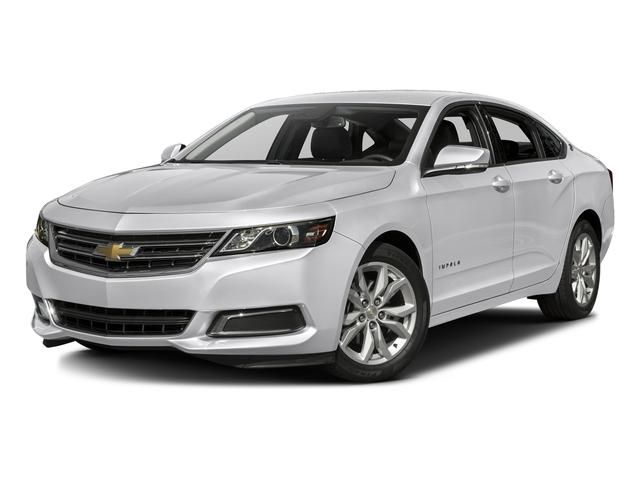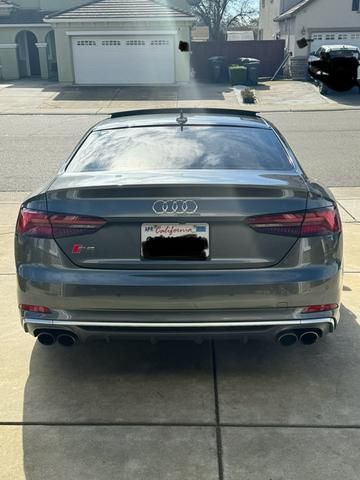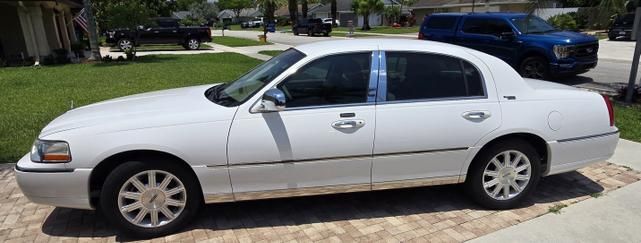
2019 HYUNDAI IONIQVIN: KMHC05LC2KU138808

Historical Records
Vehicle involved in a sideswipe collision with another motor vehicle
Airbag deployed
Outer tie rod(s) replaced
Alignment performed
 Window Sticker
Window Sticker
- Manufacturer's Suggested Retail Price (MSRP)
- Engine and Transmission Specifications
- Equipment, Packages, and Extra Features
- Fuel Economy Rating
- Other Information

| Year | 2019 |
| ODO | 8349 mi |
| Seller | Hidden text (Hidden text) |
| Location | Bentonville, AR, 72712 |
| Date | appeared 3 years ago latest price $9460 sale post disappeared 2021-10-23 |
| Price History | |
| Sale Website Type | classifieds |
| Notes | |
| Hidden text | |



| Body Style | Hatchback |
| Color | Ceramic White |
| Color (Interior) | Charcoal Black |
| Transmission | 6-Speed Automatic with Auto-Shift |
| Engine | 1.6L I4 16V GDI DOHC Hybrid |
| Drive | FWD |
| Fuel Type | Hybrid |
- 1961
- Apple CarPlay & Android Auto
- Hidden text
- Driver Vanity Mirror
- Hidden text
- Front Dual Zone A/C
- Hidden text
- Leather shift knob
- Hidden text
- Power Driver Seat
- Hidden text
- Split folding rear seat
- Hidden text
- Auto-Dimming Rear-View Mirror
- Hidden text
- Dual front side impact airbags
- Hidden text
- Garage Door Transmitter: Homelink
- Hidden text
- Occupant Sensing Airbag
- Hidden text
- Power Steering
- Hidden text
- Steering Wheel Mounted Audio Controls
- Hidden text
- AM/FM radio: SiriusXM
- Hidden text
- Delay-Off Headlights
- Hidden text
- Front Bucket Seats
- Hidden text
- Knee Airbag
- Hidden text
- Passenger Vanity Mirror
- Hidden text
- Speed control
- Hidden text
- Wheels: 17 X 7.0j Eco-Spoke Aluminum Alloy
- Hidden text
- Bluetooth
- Hidden text
- Emergency Communication System: Blue Link
- Hidden text
- Heated Front Bucket Seats
- Hidden text
- Overhead Airbag
- Hidden text
- Rear seat center armrest
- Hidden text
- Tilt steering wheel
- Hidden text
- Auto High-Beam Headlights
- Hidden text
- Dual Front Impact Airbags
- Hidden text
- Fully Automatic Headlights
- Hidden text
- Low Tire Pressure Warning
- Hidden text
- Power Moonroof
- Hidden text
- Spoiler
- Hidden text
- Traction Control,4-Wheel Disc Brakes
- Hidden text
- Bucket Front Seats
- Hidden text
- Electrochromatic rearview mirror
- Hidden text
- Heated driver mirror
- Hidden text
- Power remote driver mirror adjustment
- Hidden text
- Adaptive cruise control,4-wheel ABS Brakes
- Hidden text
- Compass
- Hidden text
- External temperature display
- Hidden text
- Interior air filtration
- Hidden text
- Power Windows
- Hidden text
- SiriusXM AM/FM/HD/Satellite Radio
- Hidden text
- Trip Computer
- Hidden text
- Automatic front air conditioning
- Hidden text
- Driver And Passenger Heated-Cushion
- Hidden text
- Fuel Capacity: 11.9 gal.
- Hidden text
- Audio controls on steering wheel
- Hidden text
- Cruise controls on steering wheel
- Hidden text
- Fold forward seatback rear seats
- Hidden text
- Leather seat upholstery
- Hidden text
- Stability Control
- Hidden text
- Video Monitor Location: Front
- Hidden text
- Lithium polymer electric motor battery
- Hidden text
- Power remote passenger mirror adjustment
- Hidden text
- Rear spoiler: Lip
- Hidden text
- Silver w/painted accents aluminum rims
- Hidden text
- Suspension class: Regular
- Hidden text
- Transmission gear shifting controls on steering wheel
- Hidden text
- Wheel Diameter: 17
- Hidden text
- Anti-Theft Alarm System
- Hidden text
- Daytime Running Lights
- Hidden text
- Front Ventilated disc brakes,1st and 2nd row curtain head airbags
- Hidden text
- Leather/metal-look shift knob trim
- Hidden text
- Rear bench
- Hidden text
- Speed-proportional electric power steering
- Hidden text
- Vehicle Emissions: LEV3-SULEV30
| Year | 2019 |
| ODO | 464 mi |
| Seller | Hidden text (Hidden text) |
| MSRP | $8849 |
| Location | Bentonville, AR, 72712 |
| Date | appeared 5 years ago latest price $8677 sale post disappeared 2022-03-25 |
| Price History | |
| Sale Website Type | classifieds |
| Notes | |
| Hidden text | |



| Body Style | Hatchback |
| Color | Ceramic White |
| Color (Interior) | Charcoal Black |
| Transmission | 6-Speed Automatic with Auto-Shift |
| Engine | 1.6L I4 16V GDI DOHC Hybrid |
| Drive | FWD |
| Fuel Type | Hybrid |
- 4-Wheel Disc Brakes,6 Speakers
- Hidden text
- Bumpers: Body-Color
- Hidden text
- Bodyside moldings
- Hidden text
- Driver's Seat Integrated Memory System (IMS)
- Hidden text
- Front Anti-Roll Bar
- Hidden text
- Knee Airbag
- Hidden text
- Air Conditioning
- Hidden text
- Distance Pacing Cruise Control: Smart Cruise Control (Scc)
- Hidden text
- Power Steering
- Hidden text
- Carpeted Floor Mats
- Hidden text
- Four Wheel Independent Suspension
- Hidden text
- Heated Front Seats
- Hidden text
- Overhead Airbag
- Hidden text
- Tilt steering wheel
- Hidden text
- Driver Vanity Mirror
- Hidden text
- Front Center Armrest
- Hidden text
- ABS Brakes
- Hidden text
- Delay-Off Headlights
- Hidden text
- Automatic Temperature Control
- Hidden text
- Power Door Mirrors
- Hidden text
- Remote Keyless Entry
- Hidden text
- Occupant Sensing Airbag
- Hidden text
- Dual Front Impact Airbags
- Hidden text
- Panic alarm
- Hidden text
- Exterior Parking Camera Rear
- Hidden text
- Dynamic Bending Light Function
- Hidden text
- Rear Parking Sensors
- Hidden text
- Heated Door Mirrors
- Hidden text
- Speed control
- Hidden text
- High Intensity Discharge Headlights: Bi-Xenon
- Hidden text
- Outside temperature display
- Hidden text
- Passenger Vanity Mirror
- Hidden text
- Overhead console
- Hidden text
- Power Driver Seat
- Hidden text
- Rear Bumper Applique
- Hidden text
- Security System
- Hidden text
- Steering Wheel Mounted Audio Controls
- Hidden text
- Ultimate Package 02
- Anti-Theft Alarm System
- Hidden text
- Digital Audio Input
- Hidden text
- Front reading lights
- Hidden text
- Leather/metal-look shift knob trim
- Hidden text
- Rear seats center armrest
- Hidden text
- Split rear bench
- Hidden text
- Automatic front air conditioning
- Hidden text
- Driver And Passenger Heated-Cushion
- Hidden text
- Fuel Capacity: 11.9 gal.
- Hidden text
- Leather/metal-look steering wheel trim
- Hidden text
- Rear spoiler: Lip
- Hidden text
- Stability Control
- Hidden text
- Bluetooth Wireless Phone Connectivity
- Hidden text
- Dual front air conditioning zones
- Hidden text
- Fuel Consumption: Highway: 54 mpg
- Hidden text
- Manufacturer's 0-60mph acceleration time (seconds): 10.6 s
- Hidden text
- Remote activated exterior entry lights
- Hidden text
- Tachometer
- Hidden text
- Wheel Width: 7
- Hidden text
- Braking Assist
- Hidden text
- Dual illuminated vanity mirrors
- Hidden text
- Fuel Type: Regular unleaded
- Hidden text
- Passenger Airbag
- Hidden text
- Remote power door locks
- Hidden text
- Tilt and telescopic steering wheel
- Hidden text
- Driver And Passenger Heated-Seatback
- Hidden text
- Blue Link
- Hidden text
- Driver knee airbags
- Hidden text
- Fuel Consumption: City: 55 mpg
- Hidden text
- Lithium polymer electric motor battery
- Hidden text
- Remote Engine Start -Smart Device
- Hidden text
- Suspension class: Regular
- Hidden text
- Wheel Diameter: 17
- Hidden text
- Vehicle Emissions: LEV3-SULEV30
- Hidden text
- Video Monitor Location: Front
Model Analytics & Market Report
Depreciation
| Year | Average Mileage | Average Price | % Left | % Lost | ||
|---|---|---|---|---|---|---|
| 2019 MSRP | 0 mi | $27,050 | — | — | 100% | 0% |
| 2021 | 34,227 mi | $21,498 | +$0 | +0% | 79.48% | 20.52% |
| 2022 | 45,636 mi | $19,950 | +$1,548 | +7.2% | 73.75% | 26.25% |
| 2023 | 57,045 mi | $18,123 | +$1,827 | +9.16% | 67% | 33% |
| → Visit 2019 HYUNDAI IONIQ depreciation page to see full data. | ||||||
Price vs Mileage
| Mileage | Average Price | Sample Size |
|---|---|---|
| 5,000 mi | $23,599 | 65 sales |
| 10,000 mi | $23,595 | 131 sales |
| 15,000 mi | $22,810 | 242 sales |
| 20,000 mi | $21,959 | 339 sales |
| 25,000 mi | $21,998 | 416 sales |
| 30,000 mi | $20,999 | 448 sales |
| → Visit 2019 HYUNDAI IONIQ depreciation page to see full data. | ||
VIN Decoder — 59 records
Anti-lock Braking System (ABS) means a portion of a service brake system that automatically controls the degree of rotational wheel slip during braking by: (1) Sensing the rate of angular rotation of the wheels; (2) Transmitting signals regarding the rate of wheel angular rotation to one or more controlling devices that interpret those signals and generate responsive controlling output signals; and (3) Transmitting those controlling signals to one or more modulator devices that adjust brake actuating forces in response to those signals.
An auto-reverse system enables power windows and sunroofs on motor vehicles to automatically reverse direction when such power windows and panels detect an obstruction. This feature can prevent children and others from being trapped, injured, or killed by the power windows and sunroofs.
Electric vehicle warning sounds are a series of sounds designed to alert pedestrians to the presence of electric drive vehicles such as hybrid electric vehicles (HEVs), plug-in hybrid electric vehicles (PHEVs), and all-electric vehicles (EVs) travelling at low speeds. Vehicles operating in all-electric mode produce less noise than traditional combustion engine vehicles and can make it more difficult for pedestrians, the blind, cyclists, and others to be aware of their presence.
ESC is a computerized technology that improves a vehicle's stability by detecting and reducing loss of traction (skidding). When ESC detects loss of steering control, it automatically applies the brakes to help steer the vehicle in the driver's intended direction. Braking is automatically applied to wheels individually, such as the outer front wheel to counter oversteer, or the inner rear wheel to counter understeer. Some ESC systems also reduce engine power until control is regained.
A keyless ignition system permits starting a car without a physical key being inserted into an ignition. Instead, a small device known as a "key fob" transmits a code to a computer in the vehicle when the fob is within a certain close range. When the coded signal matches the code embedded in the vehicle's computer, a number of systems within the car are activated, including the starter system. This allows the car to be started by simply pressing a button on the dashboard while the key fob is left in a pocket or a purse. The vehicle is usually shut down by pushing the same button.
A TPMS is an electronic system designed to monitor the air pressure inside the pneumatic tires on various types of vehicles. TPMS can be divided into two different types - direct and indirect. Direct TPMS employ pressure sensors on each wheel, either internal or external. The sensors physically measure the tire pressure in each tire and report it to the vehicle's instrument cluster or a corresponding monitor. Indirect TPMS does not use physical pressure sensors but measure air pressures by monitoring individual wheel rotational speeds and other signals available outside of the tire itself.
When the traction control computer detects a driven wheel or wheels spinning significantly faster than another, it invokes an electronic control unit to apply brake friction to wheels spinning due to loss of traction. This braking action on slipping wheels will cause power transfer to the wheels with traction due to the mechanical action within the differential.
A backup camera, also known as a rearview video system, helps prevent back-over crashes and protects our most vulnerable people - children and senior citizens - by providing an image of the area behind the vehicle. A backup camera helps the driver see behind the vehicle while in reverse.
A parking assist system uses computer processors, back up cameras, surround-view cameras, and sensors to assist with steering and other functions during parking. Drivers may be required to accelerate, brake, or select gear position. Some systems are capable of parallel and perpendicular parking. Drivers must constantly supervise this support feature and maintain responsibility for parking.
BSW alerts drivers with an audio or visual warning if there are vehicles in adjacent lanes that the driver may not see when making a lane change.
An LDW system monitors lane markings and alerts the driver if their vehicle drifts out of their lane without a turn signal or any control input indicating the lane departure is intentional. An audio, visual or other alert warns the driver of the unintentional lane shift so the driver can steer the vehicle back into its lane.
An LKA system prevents a driver from unintentionally drifting out of the intended travel lane. LKA systems use information provided by Lane Departure Warning (LDW) system sensors to determine whether a vehicle is about to unintentionally move out of its lane of travel. If so, LKA activates and corrects the steering, brakes or accelerates one or more wheels, or does both, resulting in the vehicle returning to its intended lane of travel.
Engine displacement (in cubic centimeters) is the volume swept by all the pistons inside the cylinders of a reciprocating engine in a single movement from top dead center to bottom dead center.
Engine displacement (in cubic inches) is the volume swept by all the pistons inside the cylinders of a reciprocating engine in a single movement from top dead center to bottom dead center.
Engine displacement (in liters) is the volume swept by all the pistons inside the cylinders of a reciprocating engine in a single movement from top dead center to bottom dead center.
Electrification level defines to what level the vehicle is powered by electric system. The common electric system configurations are mild hybrid, strong hybrid, plug-in hybrid, battery electric, and fuel cell vehicles.
(1) Mild hybrid is the system such as 12-volt start-stop or 48-volt belt integrator starter generator (BISG) system that uses an electric motor to add assisting power to the internal combustion engine. The system has features such as stop-start, power assist, and mild level of generative braking features.
(2) Strong hybrid systems, in vehicles such as the Toyota Prius, mainly consist of motors, conventional gasoline engine, and battery, but the source of electrical charge for the battery power is provided by the conventional engine and/or regenerative braking.
(3) Plug-in hybrid systems, in vehicles such as the Toyota Rav4 Prime, mainly consist of motors, conventional gasoline engine and battery. Plug-in hybrid vehicles are like strong hybrids, but they have a larger battery pack and can be charged with an external source of electricity by electric vehicle supply equipment (EVSE).
(4) Battery electric vehicles (BEV), such as the Tesla Model S or Nissan Leaf, have only a battery and electrical motor components and use electricity as the only power source.
(5) Fuel cell electric vehicles (FCEV) use full electric drive platforms but consume electricity generated by onboard fuel cells and hydrogen fuel.
Engine brake is the horsepower (hp) at the engine output shaft. Engine Brake (hp) From is the lower value of the range.
This is a numerical field to store the number of cylinders in an engine. Common values for passenger cars are 4 or 6.
Fuel type defines the fuel used to power the vehicle. For vehicles that have two power sources, such as plug-in hybrid vehicle, both primary fuel type and secondary fuel type will be provided.
Body Class presents the body type based on 49 CFR 565.12(b): "Body type means the general configuration or shape of a vehicle distinguished by such characteristics as the number of doors or windows, cargo-carrying features and the roofline (e.g., sedan, fastback, hatchback)." Definitions are not provided for individual body types in the regulation.
Gross vehicle weight rating (GVWR) is the maximum operating weight of a vehicle including the vehicle's chassis, body, engine, engine fluids, fuel, accessories, driver, passengers and cargo, but excluding that of the trailers. Per 49 CFR 565.15, Class 1 is further broken down to Class A-D; Class 2 is further broken down to Class E-H. This field captures the lower bound of GVWR range for the vehicle.
Gross vehicle weight rating (GVWR) is the maximum operating weight of a vehicle including the vehicle's chassis, body, engine, engine fluids, fuel, accessories, driver, passengers and cargo, but excluding that of the trailers. Per 49 CFR 565.15, Class 1 is further broken down to Class A-D; Class 2 is further broken down to Class E-H. This field captures the higher bound of GVWR range for the vehicle.
Base price of the vehicle is the cost of a new vehicle with only the standard equipment and factory warranty. It is the cost without any optional packages.
Per 49 CFR 565, Model means a name that a manufacturer applies to a family of vehicles of the same type, make, line, series and body type.
If the model year (MY) is supplied when the VIN is decoded, such as from a crash report or a vehicle registration record, the MY value will be the supplied MY, even if the MY decoded from the VIN differs from the supplied MY. If the MY is not supplied when the VIN is decoded, the MY value will be decoded from the 10th character in the VIN.
This data element captures the city of the manufacturing plant where the manufacturer affixes the VIN.
This data element captures the country of the manufacturing plant where the manufacturer affixes the VIN.
This field captures the location of curtain air bags. Curtain air bags are side air bags that protect the head.
This field captures the location of frontal air bags. Frontal air bags are generally designed to deploy in "moderate to severe" frontal or near-frontal crashes.




































